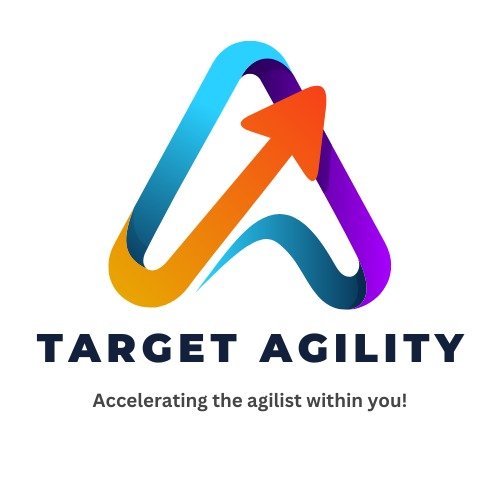In 2025, the role of a Scrum Master goes far beyond managing stand-ups or tracking velocity. Companies now expect Scrum Masters to act as team coaches, change leaders, and business partners. But most blogs still list the same old interview questions year after year.
If you’re preparing for a Scrum Master interview this year, it’s time to focus on what’s really being asked in the real world—questions that reflect today’s hybrid work setups, evolving Agile practices, and the growing push for business results over process checklists.
Here are 10 thoughtful and up-to-date questions you’re more likely to hear in a 2025 Scrum Master interview—along with why they matter and how to think about your answers.
1. How do you help a team stay Agile while also meeting compliance rules or audit needs?
Why it’s important: Many industries (like finance or healthcare) have strict rules. Teams need to be flexible and still follow them.
What to say: Talk about helping teams document the right things (like Definition of Done) and work closely with compliance teams without slowing down their delivery. Share how you found balance between following rules and staying Agile.
2. Tell me about a time you had to simplify a scaled Agile setup because it wasn’t working.
Why it’s important: Companies often jump into SAFe or other frameworks too early, which can create more problems than it solves.
What to say: Share a story where things got too complicated and you helped reduce overhead—maybe by focusing on smaller team coordination or cutting out extra ceremonies. Show that you can tailor Agile, not just follow it.
3. How do you recognize signs of burnout in a team, and how do you respond?
Why it’s important: Well-being matters more than ever, especially in remote or high-pressure environments.
What to say: Mention signs like low engagement, repeated missed goals, or team tension. Talk about how you create space for open conversation and promote a healthy work rhythm.
4. What would you do if a Product Owner keeps changing priorities during the sprint?
Why it’s important: Teams need focus to deliver. Constant changes hurt that.
What to say: Talk about coaching the PO on respecting the sprint plan and educating stakeholders on the cost of switching. Mention how you work with the team and PO to build trust and improve planning.
5. How do you encourage accountability without just relying on numbers like velocity?
Why it’s important: Teams need to take ownership, but not feel like they’re being judged by data alone.
What to say: Share how you encourage team-owned commitments, promote shared responsibility, and focus on continuous improvement. Mention retrospectives, working agreements, or visual tools like Kanban boards.
6. How do you run Agile meetings differently for remote, hybrid, or in-person teams?
Why it’s important: Most teams are no longer working from the same location.
What to say: Explain how you use digital tools, vary your facilitation style, and ensure everyone’s voice is heard. Talk about being flexible with formats to keep meetings engaging and useful.
7. Have you ever used storytelling to help a team or stakeholder understand something better?
Why it’s important: People remember stories more than charts or rules.
What to say: Give an example of when you used a story, analogy, or real-life situation to explain Agile or influence a decision. Show that you can connect with people, not just process.
8. How do you make sure your team’s work aligns with company goals or OKRs?
Why it’s important: Teams need to see how their work supports the bigger picture.
What to say: Talk about involving the team in PI planning, reviewing OKRs during backlog grooming, or creating sprint goals tied to outcomes. Show how you help the team focus on value.
9. Have you worked with Agile teams outside of IT, like in HR or marketing? What did you learn?
Why it’s important: Agile is spreading to all parts of the business.
What to say: Share how you helped non-tech teams get started with Agile principles. Maybe you introduced simple Kanban boards, daily stand-ups, or retrospectives. Emphasize how you adjusted your style for their unique needs.
10. If your team meets all sprint goals, but stakeholders still aren’t happy—what would you do?
Why it’s important: Delivering everything planned doesn’t always mean you delivered the right thing.
What to say: Talk about how you’d improve communication with stakeholders, ensure the backlog reflects real value, and use reviews or demos to gather better feedback. Show that you care about customer satisfaction, not just internal metrics.
Why These Questions Matter in 2025
Scrum Master interviews today are about more than the Scrum Guide. Employers want someone who can:
- Navigate uncertainty
- Connect team delivery to business results
- Handle people challenges, not just process ones
- Bring coaching skills and emotional intelligence
- Adapt to remote and hybrid teams
If you’re preparing, go beyond the basics. Reflect on real stories from your experience, your approach to tough situations, and how you help teams succeed—not just follow process. Want more similar question 👉 Click here
Conclusion
Being a Scrum Master in 2025 means wearing many hats: coach, guide, facilitator, problem-solver, and change agent. Interviewers want to know how you think, support people, and bring real value to the organization.
So practice answering questions like these with stories from your work. Focus on how you solve problems, guide teams, and grow as a leader. That’s how you’ll stand out and show you’re ready for the future of Agile.











